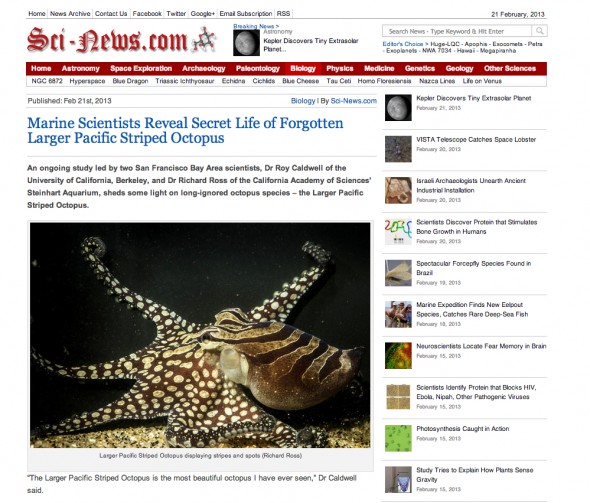Rare Kissing Octopus Unveiled For the First Time
From LiveScience.com • From Discovery.com • From HuffPost • From Fox News • From The Weather Channel • From Wikipedia • From NBC news
Rare Kissing Octopus Unveiled For the First Time

CREDIT: Richard Ross
And unlike other octopuses, where females have a nasty habit of eating their partners during sex, Larger Pacific Striped Octopuses mate by pressing their beaks and suckers against each other in an intimate embrace.The beautiful creature can also morph from dark red to black-and-white stripes and spots and can shape-shift from flat to expanded.The sea dweller will be on display starting today (Mar. 6) at the California Academy of Sciences in San Francisco.”I’m thrilled that Academy visitors will have the opportunity to view this fascinating animal up close in the aquarium, where they’ll see just why its beauty, unique mating technique and social habits are intriguing the cephalopod community,” said Richard Ross, a biologist at the California Academy of Sciences, in a statement. (more…)
